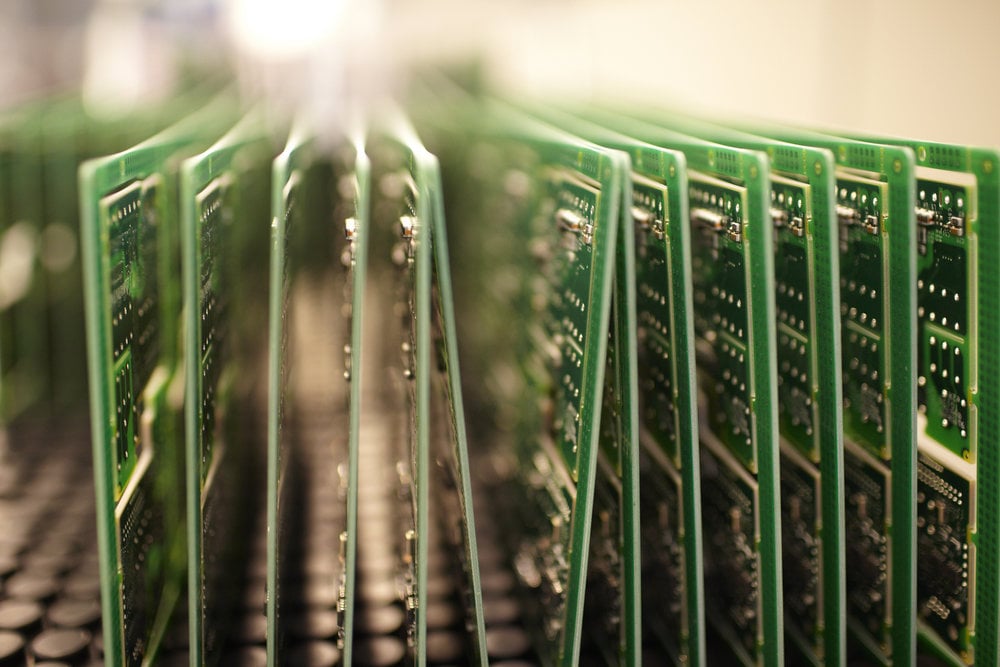www.industryemea.com
13
'12
Written on Modified on
The future of industrial networking
Jörgen Palmhager and Leif Malmberg at HMS Industrial Networks take you behind the scenes of the next generation of industrial communication technology.

“In order to understand the new technology, you first need to have a look in the rear view mirror,” says Jörgen Palmhager, Chief Operating Officer at HMS. “When the Industrial Ethernet networks were introduced in the early 2000s, device manufacturers and machine builders found themselves with a new challenge – keeping their devices compatible with the existing fieldbus networks as well as the new industrial Ethernet networks. At HMS, we realized that a specialized network processor was needed which had the right functionality, cost, size and performance. ”
The result was the Anybus NP30, a single-chip network processor which included a processor, controller, and API on a very limited space (10x10 mm). It also included a flash memory enabling it to save data on the actual chip.

New networks, new demands .
“What we have seen over the past few years though, is that industrial Ethernet is now demanding more performance and a new architecture,” says Jörgen Palmhager. “The new industrial Ethernet networks are getting more and more specialized which requires a lot from a network processor that is to handle the ‘translation’ between different networks and protocols. In short, you could say that we need to transfer more data while being more flexible when it comes to the different network characteristics.”
To meet this demand, HMS now presents the Anybus NP40, a single chip network processor that includes a high-performance ARM core and an FPGA (Field-Programmable Gate Array) fabric. The device is Flash-based and the architecture is designed to combine performance and flexibility in a single chip.
The FPGA fabric is used to implement the various real-time Ethernet interfaces while the ARM core is used to run the protocol and application stacks. Since the NP40 is Flash-based, the device can be re-programmed for several different industrial Ethernet networks. This means that a single hardware platform can support several different networks by simply downloading new firmware. “This new technology makes life easier for device manufacturers since they can install a communication module into a product and then download exactly the software they need to connect to different networks,” says Jörgen Palmhager.
“We believe that this new technology with a combination of a faster processor and an FPGA area will provide a future-proof platform,” he continues. “It gives users the best of both worlds. They get the speed and accuracy they need for demanding applications, and the flexibility to adapt to different networks by simply downloading a new firmware.”

Three formats .
Leif Malmberg is Product Line Manager for embedded solutions at HMS. He has long seen a trend in the automation industry for complete solutions, but in different form factors. “Our customers want complete solutions when it comes to functionality, support, consultancy and maintenance,” he says. “However, they do ask for different formats for their connectivity solutions depending on how integrated they want their solutions to be. We still see most users asking for a complete module that they can just plug into their machines to achieve network connectivity, but there are users that want a semi-complete network card that they can mount on their motherboard and equip with their own network connectors. There are also those who just want the network processor itself and build their own solution around it.”
This is why HMS now package their embedded CompactCom offering into three different form factors: A chip, a brick, and a module enabling the users to choose how integrated they want their communication solution to be. This can vary from implementing a communication chip and designing the rest of the hardware on their own, to mounting a brick and attaching their own connectors, or plugging in a ready-made communication module. “In a way, we have had these options available previously with the NP30,” says Leif Malmberg, “but with the new embedded concept, we now take a further step towards widening our offer with a new technology platform in several formats.”

Jîrgen Palmhager
Safety, energy and other trends.
Increased performance and flexibility may be the strongest trends driving the new technology, but there are other trends in the industry which are influential as well. Integrated safety is one such trend as more and more industrial plants are looking for ways to integrate safety networks into their regular factory networks. This is also why HMS is developing a new safety module to enable communication between an industrial device and a safety network.
Another important trend is energy savings as companies try to become greener, save money and comply with tougher legislation for energy consumption and emissions. “We see this trend quite clearly,” says Jörgen Palmhager. “Both through emerging energy profiles such as PROFIenergy, but also as a general trend in society. We often see industrial installations where the different machines have a usage rate of less than 40%. Since machines in many cases consume almost the same amount of energy in stand-by as in operation mode, there is a lot of money to be saved by automatically switching off machinery when it isn’t used. Another evident example is the aftermath of the recent earthquake and tsunami in Japan. Since there was a shortage of power following the malfunction of the Fukushima reactors, companies are really trying to save energy by all means possible, and industrial devices with low power consumption are still in high demand.”
The new Ethernet networks enable more functionality and easier access to industrial applications. This also makes it increasingly important to consider security aspects such as preventing unauthorized access – both for the entire plant as well as for the individual devices. “It is of major importance for us to provide secure solutions, and more and more customers are asking for this,” says Jörgen Palmhager. “Yet another upcoming Ethernet requirement is to provide products supporting the new Internet Protocol version 6 (IPv6). We already have solutions up and running on this protocol, and this will definitely be a must-have for the future.”

Leif Malmberg
Even though the next generation of communication solutions will not hit the market as standard modules until 2013/2014, there are already pilot customers spearheading the technology. “We are actually implementing our new NP40-based technology at pilot customers and developing it in partnership to get really close to the factory applications,” says Jörgen Palmhager. Leif Malmberg fills in: “We see a major interest in this new technology, especially from companies within drives and motion. The AIDA companies and their suppliers will most likely be early adopters of this new technology.”
HMS still sees a demand for a complete communication solution where device manufacturers want consultancy and support throughout the implementation rather than building a solution themselves. “Yes, this wish has stayed more or less intact throughout the years,” says Leif Malmberg. “Machine builders and device manufacturers see a big advantage in being able to focus on building their devices and leave the network communication to a partner."

